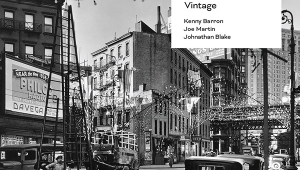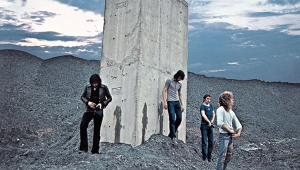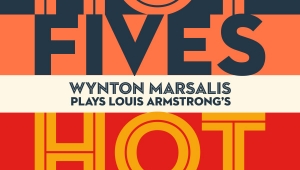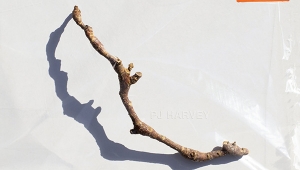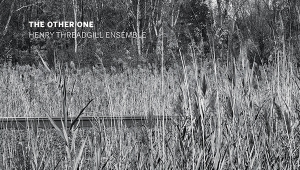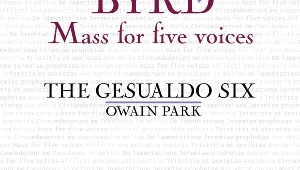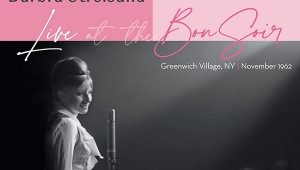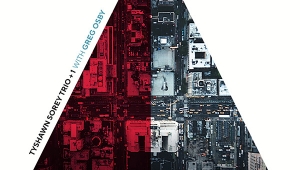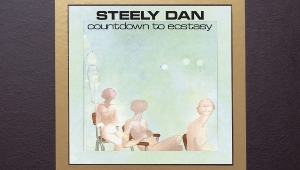| Columns Retired Columns & Blogs |
Recording of March 2002: Swing Live
BUCKY PIZZARELLI: Swing Live
Bucky Pizzarelli, guitar; Allen Vaché, clarinet; Peter Appleyard, vibes; Michael Moore, bass; Bernard Purdie, drums
Chesky JD218 (CD), SACD223 (hybrid multichannel SACD), CHDVD222 (DVD-A, not reviewed). 2001. David Chesky, prod.; Barry Wolifson, Nicholas Prout, engs. DDD. TT: 60:00
Performance ****
CD Sonics ***?
SACD Sonics ****? (two-channel), ***** (multichannel)
Which brings us to Swing Live, an album whose sole raison d'être is its heroic forward propulsion. With Swing Live, even jazz critics who couldn't swing if you hung 'em will find themselves tapping and bobbing to a body-stirring, soul-throbbing, spirit-lifting energy that can only be called by one name.
Bucky Pizzarelli, guitar; Allen Vaché, clarinet; Peter Appleyard, vibes; Michael Moore, bass; Bernard Purdie, drums
Chesky JD218 (CD), SACD223 (hybrid multichannel SACD), CHDVD222 (DVD-A, not reviewed). 2001. David Chesky, prod.; Barry Wolifson, Nicholas Prout, engs. DDD. TT: 60:00
Performance ****
CD Sonics ***?
SACD Sonics ****? (two-channel), ***** (multichannel)
Keith Jarrett recently made the observation that jazz critics don't talk about swing anymore. Jarrett speculated that critics either fail to recognize swing when they hear it, or assume it as a given. As a critic who has not been outspoken on the subject of swing, I suggest two additional hypotheses. First, in postmodern jazz, swing is often an implicit or even sublimated element. Second, the term has lost its hipness. Current critics may feel that to describe a jazz performance as "swinging" would be like an art critic describing a painting as "pretty." There are connotations of damning by faint praise.
 | |
Bucky Pizzarelli came up in the pre-Charlie Parker 1940s and later toured with Benny Goodman. For the post-Parker generations of jazz listeners, Pizzarelli's music, with its uniform phrasing and equal weight given to four beats of the bar, will probably sound quaint. But Pizzarelli's quintet, with instrumentation similar to that of Goodman's small ensembles, plays the Swing Era style with expertise, authenticity, and passion.
The most compelling voice in this band is not the leader's guitar but the clarinet of Allen Vaché. The clarinet has not been a major instrument in jazz for over 50 years, but in the hands of a master like Vaché, its pure, keening squeal is still an urgent summons. (Presumably, the Pied Piper played the clarinet, and Benny Goodman once caused crowds to riot.)
In his role of rhythm guitarist, Pizzarelli's locked-in yet supple drive is the primary source of this music's groove. When he solos, no matter the tempo, he plays lines that sound both inevitable and relaxed. Peter Appleyard on vibes belongs here because his spontaneous melodies are inseparable from his rhythmic accents.
Chesky Records has released Swing Live in a standard CD version, and also in a hybrid multichannel version that will play regular CD, two-channel SACD, and multichannel (4.0) SACD. (There is also a DVD-Audio version, not reviewed here.) Chesky stands for minimalist miking and undisturbed signal paths. One of the reasons that audiophiles stay hooked is that there is no such thing as One Truth in matters of recorded sound. Instead, there are Truths. Chesky's truth is to recover and religiously protect ambient cues, in order to re-create a sense of the space in which the recording was made. Choosing a truth involves tradeoffs. Chesky sacrifices bass impact and the excitement of close focus.
Your present reviewer has never been a strong fan of the Chesky sound—the bass and drums often sound too far away. What I am apparently supposed to hear as depth I hear as off-mike. That said, any viable audio truth can be enjoyed on its own terms. Once your brain has adjusted, the pale, error-free purity of the Chesky sound creates unique pleasures.
Swing Live was recorded before a live audience in Makor, a small New York venue. In the CD version, Michael Moore's bass and Bernard Purdie's drums are soft, yet the ensemble is depicted with undeniable verisimilitude, like actual eavesdropping from a small distance.
When you switch to the two-channel SACD version, something quietly miraculous happens. Because SACD delivers more low-level detail and dynamic contrast, suddenly it is much less necessary to live without incisiveness and immediacy to get Chesky spaciousness. On "Limehouse Blues," the collisions of Appleyard's mallets on the metal bars of his vibraphone are richer, more complex events. Vaché's clarinet is smoother and yet has more zeal. Pizzarelli seems to strum harder.
But the real fun begins with the multichannel SACD version. Chesky engineers Barry Wolifson and Nicholas Prout use the two rear channels strategically and tastefully, for rear-wall reflections and crowd noise. The clapping and shouts from the enthusiastic audience surround you in a seamless wrap. On "Dinah," when Vaché enters for his second solo after Pizzarelli and Purdie trade fours, and the audience around you erupts, the rush is intense—and, for listeners who have previously lived in a two-channel world, it is new. It is the difference between perceiving the event from an external vantage point and being there. And once you've been there, it's hard to go back.—Thomas Conrad
- Log in or register to post comments



